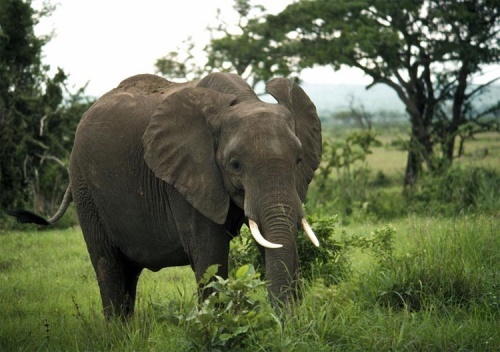
Faced with increased poaching and illegal trade in ivory and horns of elephants and rhinoceroses, 300 government and civil society experts worldwide are seeking to strengthen conservation with new financial mechanisms at a United Nations-backed meeting in Geneva this week. (From UNEP & UN News Centre Sources)
“Innovative financial solutions are required to achieve the huge conservation task before us,” John Scanlon, Secretary-General of the Convention on International Trade in Endangered Species of Wild Fauna and Flora (CITES), told the Standing Committee of the 175-member State treaty, whose secretariat is administered by the UN Environmental Programme (UNEP).
“With nearly seven billion people consuming biodiversity every day in the form of medicines, food, clothes, furniture, perfumes or luxury goods, a robust CITES is more relevant and needed today than ever. Enhanced cooperation with other organizations and initiatives is crucial to bridge the financial gap between the cost to implement CITES regulations effectively, the resources currently allocated and the services provided to stakeholders.”
Broader Agenda:
High on the agenda of the five-day meeting, which began yesterday, are new financial mechanisms, elephant conservation, measures to reduce current levels of poaching of rhinos, tigers and other big cats, illegal trade in mahogany and other timber species, the fate of sturgeon and the caviar trade, and the sourcing of reptile skins used in the leather industry.
Poaching on Rise – Poverty & China Demand?
According to a report prepared by the CITES programme for Monitoring the Illegal Killing of Elephants (MIKE), last year saw the highest levels of elephant poaching since 2002, with Central Africa being of most concern, with poverty, poor governance and consumption patterns in China, among the prime causes. The committee will consider targeted measures for tightening ivory trade controls all along the illegal trade chain in key African and Asian countries, and for raising awareness in Asian markets and transit countries.
Rhino Poaching on Rise:
With rhinos, numbers have increased consistently since the early 1990s, particularly in Africa, thanks to CITES trade controls, but this trend is being jeopardized by the upsurge in demand and consequent increase in poaching levels, with illegal trade in horns, used in Asia as a medicine and for dagger handles, the driving force behind this poaching. According to a South African Government report, 174 rhinos were illegally killed there in the first six months of this year, with poaching levels rising dramatically in recent years from 13 in 2007 to 330 in 2010. More than 120 suspected poachers have been arrested since January. Rhinos elsewhere, particularly in the Democratic Republic of the Congo (DRC), India, Mozambique, Nepal, and Zimbabwe, are also suffering.
More at Ecology-Diplomat -
diplomaticallyincorrect.org/c/ecology-diplomat/most_recent/1
Related ARTICLE – “Concerned in Trade of Skins” -
diplomaticallyincorrect.org/films/blog_post/concerned-on-trade-in-snake-skins-in-luxury-products-by-ambassador-mo/32547
By Ambassador Muhamed Sacirbey
Facebook – Become a Fan at “Diplomatically Incorrect”
Twitter – Follow us at DiplomaticallyX

